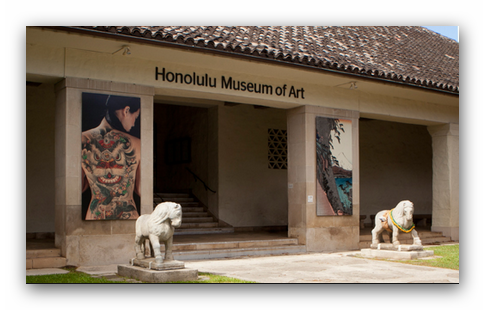Oct 19 2017 - Apr 8 2018
Honolulu, HI
For centuries, the Indian subcontinent was renowned as a center for the production of cotton textiles. The earliest archaeological fragments, found in the Indus Valley of Pakistan, date back to 3200 B.C. The related industries of processing cotton—including spinning, weaving, bleaching, dyeing, printing or painting—would soon become well-established unrivalled specializations and traditions. By the 16th century, Indian cottons were in high demand around the world. Trade with Southeast Asia was spurred by the hunger for spices—namely pepper, cloves, nutmeg and mace.
Painted cloths from the Coromandel Coast, manufactured in the vicinity of Masulipatam and Pulicat, were considered especially refined and aesthetically pleasing, and commanded a technical understanding of colorfast dyes through the use of mordants (dye fixative).
On view are sembagi, a Malay term for these painted, printed cloths that were personalized for the Indonesian market. Highly coveted, they were signifiers of prestige, status and accumulated wealth. In Indonesia, textiles were sacred heirloom objects (pusaka), ascribed protective and healing properties. Central to rites of passage ceremonies, these fabrics doubled as canopies, backdrops, awnings and floor coverings.
Credit: Exhibition overview from museum website
Exhibition Venues & Dates
Oct 19 2017 - Apr 8 2018
Honolulu, HI
